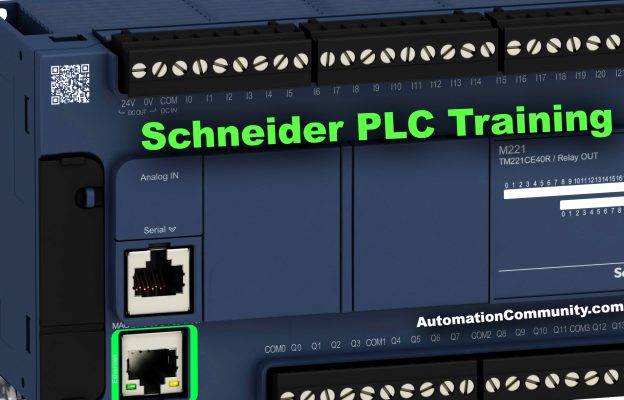AC Discrete Output Modules
Like discrete input modules, AC discrete output modules have two main sections: the power section and the logic section.
The output interface is similar to an electromagnetic switch which turns the output load on and off. The logic circuits determine the output status and an output LED indicates the status of the output signal.
In a summarized form, the operation of a discrete AC output circuit is:
1. The digital logic circuit of the processor sets the output status.
2. A voltage is applied across the LED of the opto-isolator.
3. The LED emits a light, which tells the phototransistor to switch into conduction.
4. The light triggers the triac AC semiconductor to switch into conduction mode. This allows the current to flow to the output load.
5. For fault diagnosis purposes, the LED output status light is on when the PLC is telling the output load to be switched on.
AC outputs are often limited by the size of the triac to 1 A or 2 A. Every module also has a limit to its maximum current load.
Specific current ratings should not be exceeded, in order to protect the module circuits. Discrete output modules are used to turn field output devices on or off.
They can be used to control any two-state device and are available in AC and DC units and in a variety of voltages and current ratings.
Define the input circuits of a typical AC discrete output module
The AC (alternating current) discrete output module has circuitry requirements that are very similar to its DC (direct current) counterpart.
For AC discrete output modules, you must use circuitry that can handle 120 volts or 230 VAC (the standard for AC voltage).
Overview of field wiring connection for an AC output module
As with the DC module, in an AC output module, wires connect to a terminal strip through a cabinet.
The wires then connect from the terminal strip to the AC output card.
This allows for easier troubleshooting compared to how difficult it is to see which wire connects to which location on the card terminal strip.




Responses